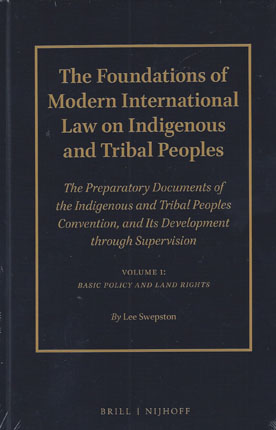
The International Labour Organization is responsible for the only two international Conventions ever adopted for the protection of the rights and cultures of indigenous and tribal peoples.
The Indigenous and Tribal Populations Convention, 1957 (No. 107) and the Indigenous and Tribal Peoples Convention, 1989 (No. 169) that revised and replaced Convention No. 107, are the only international Conventions ever adopted on the subject, and Convention No. 169 is the only one that can now be ratified.
This volume, and its companion to be published at a later date, make clear that the basic concepts and the very vocabulary of international human rights on indigenous and tribal peoples derives from these two Conventions.
The adoption in 2007 of the UN Declaration on the Rights Of Indigenous Peoples (UNDRIP), and the ongoing discussions in the international human rights community about the relative merits, impact and legal validity of the UN and ILO instruments, make it all the more important to understand how Convention 169 was adopted.
The author of this unique study was responsible for many years for the supervision of both Conventions in the ILO’s supervisory machinery, and was intimately involved in the adoption of the 1989 instrument, as well as in international discussions on the subject of indigenous and tribal peoples.